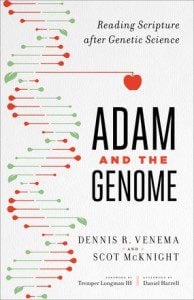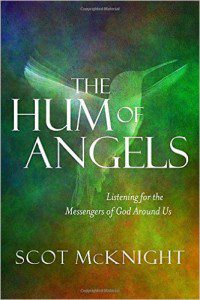 Yes, it’s that time of the year when pitchers and catchers are reporting, and when the Cubs begin the march to the World Series. I’m feeling it, how about you?!
Yes, it’s that time of the year when pitchers and catchers are reporting, and when the Cubs begin the march to the World Series. I’m feeling it, how about you?!
Sharon Robinson, on her father Jackie Robinson and his legacy — and how she wants to expand that legacy:
A bitter wind whipped across the steps in front of the Lincoln Memorial, and the reflecting pool sat dry and empty. Only the brave and the crazy stood on the granite, choosing such a frigid day to sightsee. Sharon Robinson, gray hair tossing in the gusts, thought back to a sweltering afternoon more than 52 years earlier. The place, the times – they were barely recognizable on a wintry February morning in the 21st century.
“I don’t know where I was,” she said. “I fainted. I really did.”
That afternoon, Sharon Robinson’s father, Jackie, stood on those steps as Bob Dylan and Joan Baez performed, as Martin Luther King Jr. spoke to the thousands who filled the National Mall. She is 66 now, a nurse and a midwife and an educator, not a 13-year-old girl who came to Washington with her parents so their family might better understand the movement that was afoot. Thursday, she braced against the cold and reminisced.
“He wanted us to understand,” Sharon Robinson said.
Golf courses, green-green, and plants and trees that illuminate? With PGA tour pro golfer Kermit Zarley:
On June 8, 2013, a small biotech company in San Francisco, that involves three young guys in the twenties, raised almost $500,000 on Kickstarter to try to genetically engineer plants that would illuminate. Atony Evans is a co-founder, and Kyle Taylor is the chief scientist who has discovered how to add DNA from elsewhere to plant cells that cause them to glow like fireflies at night. Their main goal is to create trees having leaves that will glow brightly enough to serve as a substitute for street lights.
This story was a sensation on Kickstarter since these inventors were only trying to raise $65,000. This story immediately went viral on the Internet, and the major news outlets covered it. Some respected scientists think these young fellows may achieve their goal. And it’s a green-green project in that it will reduce carbon emissions that result from the making of electricity with fossil fuels. They are trying to get government funding for the project. To date, they are about ready to send out seeds to paying clients.
This attempt at synthetic biology is called the Glowing Plant Project. It involves genetically modifying organisms (GMO). That’s a very controversial subject nowadays. Corn, wheat, and other foodstuffs have been genetically modified in the U.S. and other countries. The U.S. Department of Agriculture has not established regulations about this. Our government health agencies have approved some of these GMO foods. Some food products in stores are being labeled GMO because a certain portion of the American public is demanding it. The reason is that some people fear that GMO foods will, or may, prove harmful to human health in the future. See update at http://www.glowingplant.com/.
There is a lot of debate cranking up about the whole genetic engineering enterprise that is cross-disciplinary because it involves not only food and other plants but also animals and humans. Yes, genetic engineering is coming to humans. So far, it is being used in medical laboratories only for the purpose of eliminating human diseases and other maladies. I think it is inevitable that designer human babies will be the future, though a ways off. I’m writing about it in a book manuscript since I think it’s in the Bible.
But genetically modifying non-edible plants, as it is being attempted with the Glowing Plant Project, seems rather harmless. If these guys achieve their goal of making seeds that grow to become glowing trees that could even come close to replacing streetlights, it seems to me that this technology likely will be tried with trees on golf courses. The trees would look normal during the daytime, but they would automatically illuminate during the night. Just think of glowing trees lining golf fairways like lightpoles lining streets. And what about genetically modifying grass so that it illuminates as well? “Let there be light” naturally on the golf course for 24/7.
“Just because you saw a season of Grey’s Anatomy,” the Palm Beach County Sheriff’s Office said in a tweet Tuesday, “doesn’t mean you could practice medicine.”
The remark was aimed at Malachi Love-Robinson, who authorities say opened his own clinic and posed as a doctor for the second time in a year. Love-Robinson doesn’t have a license or a medical degree — it’s not even clear that he’s been to college. He is, after all, only 18.
On Tuesday, the wannabe Doogie Howser conducted a physical exam on a woman at his “holistic and alternative medical care” clinic. After taking her temperature, blood pressure and listening to her lungs with a stethoscope, he sagely assured her that she was not in fact sick, she told WPBF.
Then he was arrested.
The woman was an undercover agent with the Palm Beach Narcotics Task Force, which, along with the Florida Department of Health, started investigating Love-Robinson after getting a complaint from one of his purported patients. The teen is now being held at the Palm Beach County Jail on a $21,000 bond and is charged with practicing medicine without a license, theft and four counts of fraud.
Here’s someone who says a hot toddy is good for a cold.
Here’s someone squealing on Starbuck’s hot coffee drinks full of sugar:
Flavored drinks served by the likes of Starbucks (SBUX) can contain up to 25 teaspoons of sugar per serving, according to a new report by a British campaign group Action on Sugar.
That’s three times the amount of sugar in one can of Coke, and more than three times the maximum adult daily intake recommended by the American Heart Association.
The report said that 98% of hot flavored drinks sold at major coffee chains in the U.K. have excessive levels of sugars per serving, with 35% containing nine or more teaspoons of sugar — the same amount as a can of Coca Cola.
The research focused on drinks sold in the U.K., but nutritional information published on the companies’ website show that sugar levels are similar in the U.S. and elsewhere.
Action on Sugar describes itself as “a group of specialists concerned with sugar and its effects on health.” Its advisers and staff include doctors, nutritionists and public health specialists. It analyzed 131 hot drinks, including flavored lattes, chai teas, mocha coffees and mulled fruit drinks. The survey touched on nine big coffee shops and food chains in Britain including Starbucks, Costa and Pret a Manger.
For parents:
Teenagers, a historically wily demographic, are increasingly moving their digital social lives from public sites where their parents hang out to smartphone messaging apps, giving them nearly complete privacy in their online social lives.
Apps such as Kik, Line, WhatsApp, Ask.fm and Whisper can often be used anonymously, without parental controls, and in Snapchat’s case even automatically erase inappropriate pictures. The popularity of these apps is showing up in surveys and focus groups. Kik’s use has soared to 40 percent of teens.
To parents, many of whom are so clueless about technology that they rely on their children for tech support, the danger is obvious. To advertisers, the opportunity is enormous. They are butting in on the discussions, figuratively and literally.
For all of us… Misty Copeland’s hard road:
Onstage, Misty Copeland’s career revolves — chaînés? — around making hard work look easy. She breezes through Under Armour commercials and brisés through book signings, but she’s most famous for defying gravity onstage with American Ballet Theatre. ABT’s first black principal dancer, Copeland has been lighting up the ballet world for years. Now, the documentary A Ballerina’s Tale is lifting the curtain on just how excruciating her journey has been.
A Ballerina’s Taleaired on PBS this Monday after premiering at the Tribeca Film Festival last April. Copeland has been called a prodigy countless times, but the film unearths hardships that often go unmentioned when detailing her rise to star status. She experienced the usual setbacks any dancer can expect — ruthless competition, career-changing injuries, constant scrutiny. But unlike most of her her peers, Copeland also had to succeed as a black, self-described “curvy” woman in an industry where, historically, “balletomanes, choreographers and directors generally concurred that black bodies were unsuited to the lines of classical technique.”
While Copeland’s dancing has received overwhelming critical acclaim, her offstage persona has been subject to some negative reviews. “I think that people think that I sometimes focus too much on the fact that I’m a black dancer,” says Copeland in the opening lines of A Ballerina’s Tale. “But there’s never been a black principal woman at the Royal Ballet. At the Paris Opera Ballet. At the Kirov Ballet, in the top companies in the world. In New York City Ballet, in New York City. I don’t think that people realize what a feat it is being a black woman. But that’s so much of who I am, and I think it’s so much a part of my story.”
For some of us… the end of average:
In other words, Todd Rose is not your average guy. But neither are you.
In fact, he argues, absolutely no one is precisely average. And that’s a big problem, he tells NPR Ed: “We’ve come to embrace a way of thinking about ourselves as people that was intentionally designed to ignore all individuality and force everything in reference to an average person.”
Admissions offices, HR departments, banks and doctors make life-changing decisions based on averages. Rose says that “works really well to understand the system or the group, but it fails miserably when you need to understand the individual, which is what we need to do.”
Rose talked with us about his new book: The End Of Average: How We Succeed in a World That Values Sameness.
“The Complete Review, “a selectively comprehensive, objectively opinionated survey of books old and new,” sits on the margins of the literary world, where it has flourished for sixteen years. As of last Friday, according to an analog counter on the site’s decidedly unglamorous homepage, it had reviewed three thousand six hundred and eighty-seven books, from a hundred different countries, originally published in sixty-eight different languages—an average of two hundred and thirty books a year. Virtually all of this criticism, and everything else on the Complete Review, is the work of Michael A. Orthofer, a fifty-one-year-old lawyer who was born in Graz, Austria, and brought up in New York City. Orthofer built the site—it took about five months; he coded it with basic HTML—on a P.C. at his home, in Manhattan, in 1999. For years, his name did not appear on the site, which claimed to be run by an “Editorial Board.” In 2009, on the site’s tenth anniversary, he began signing some reviews; the next year, he unmasked himself, discreetly, on the “About” page. In April, the retiring Orthofer will make his first serious bid for mainstream respectability, by publishing a book with the Columbia University Press. “The Complete Review Guide to Contemporary World Fiction” is the culmination of his work so far, as well as a continuation and a promise.
“I’ve been reading since the age of six,” Orthofer told me on a visit to the Metropolitan Museum this fall. Raised by his mother, a painter and interior designer who had left her marriage in Graz to move West, Orthofer, as a child, would walk from his home in Gramercy Park to browse beloved bookstores such as the Barnes & Noble Annex on Eighteenth Street. During summers in Austria, with his father and extended family, he started reading in German. His father “wrote for the cabaret in Austria and also published satirical books,” Orthofer told me. He has the measured way of speaking that people with disappearing accents sometimes develop, and—with his goatee, tufts of white hair, and yellow-tinted glasses—the air of a graduate student. I first contacted him in 2004, asking him if I could write for the the Complete Review; I was an undergraduate at Stanford at the time, and thought that the site was an institution, like The New York Review of Books. I was politely rebuffed. Years later, I e-mailed to ask if I could send him a galley of my first novel. He already had it, he replied—he had picked up an advance review copy for sale at the Strand, for $1.49. He went on to review the book, giving it a B, and later e-mailed to soften the blow. “Bs always have something going for them,” he explained, while a C grade indicates “steer-clear territory.” All books on the site get a rating from A+ to F, part of the site’s endearing, Robert-Christgau-like fustiness.
HT: LNMM
Social engagement and our health:
One of the most troubling findings about aging has to do with what happens to your health after you retire. While some people find that their bodies and minds thrive in the absence of the stress of work, some 10 to 25 percent experience a significant drop in their health and well-being.
In trying to explain the different health trajectories of retirees, scientists are increasingly focusing on social factors. The theory is that social engagement or isolation can affect a person’s cognitive functioning and happiness, which in turn can affect their overall health.
In a study published in BMJ Open this week, researchers looked at 848 people 50 or older living in Britain. Half were retiring, while the other half, of similar age and health, were not.
The study found that people with a good quality of life before retirement were more likely to have a similar quality of life after retirement.
But people who were members of social groups — which could be a sports club, religious organization, trade union or any other kind of leisure or professional group — had a lower risk of death in the first six years of retirement.
Happiness, Denmark, and Bernie Sanders — by Jennifer Grant:
1. Loosen up
Australia comes in at #10 in the most recent happiness ratings. Known for being laid back (“No worries, mate!”), Australians have a reputation for not taking themselves or their lives too seriously.
Perhaps they have mastered the art of “self-forgetfulness.” It’s not about thinking of ourselves as less than we are (or as unworthy), but maybe it’s just about thinking of others, and connecting with our communities, more.
2. Be generous
Canada is the fifth happiest nation in the world and also rated as one of the most generous countries. Its new Prime Minister, Justin Trudeau, urges Canadians to welcome refugees and, generally, to practice kindness and compassion.
Whether you are a world leader (granted, not many of us can claim this position), a thought leader in your workplace, or the person who is responsible for setting the tone in your family’s culture within the walls of your own home, you can prize and promote generosity.
3. Go outside
Most—if not all—of the happiest countries are ones where residents hike, bike, and otherwise explore the beautiful outdoors.
When you’re feeling a distinct lack of well-being, take a walk with your dog around the park or just take a stroll out in nature—it’s very likely you’ll return with an increased sense of balance, health, and appreciation for the beauty of nature. Picture it: geese flying above you, in their odd formation. The feel of frozen gravel beneath your feet. Squirrels rushing up tree trunks. It’s all a good reminder that there is beauty, silence, and whimsy just outside the door. You just need to get outside and see it.
4. Eat chocolate
For the past few years, Switzerland is the first happiest nation in the world. I’m not saying this designation is due to the amazing Swiss chocolate that this country manufactures, but there’s no reason to rule that aspect out either.
So, unless a doctor’s orders or your Lenten discipline precludes it, I suggest indulging in a bit of chocolate to increase your sense of daily wellness.
5. Bring on the cozy
Okay, just because they are “only” in third place doesn’t mean that the secrets of the Danes aren’t worth copycatting.
Ask yourself: What does “cozy” mean to you? For most—if not all—of us, cozy doesn’t involve embarking on a large expenditure of cash. It’s about being mindful of what feels most comforting to you. Fuzzy socks? A warm blanket tucked around you and your kids? A favorite 1950s musical, watched for the tenth time? A fire in the fireplace? Tea in a favorite mug?
Happiness and joy are two different things—and not every season of our lives (nor that, I should add, of the typical Dane) is a happy one. We trudge through long winters. We find ourselves emotionally stranded in places that feel distinctly un-cozy. But there are times that reminders to be easy on ourselves, to indulge in the simple pleasure of a walk to the park or a piece of excellent chocolate, can connect us, again, to a sense of well-being and gratitude.















